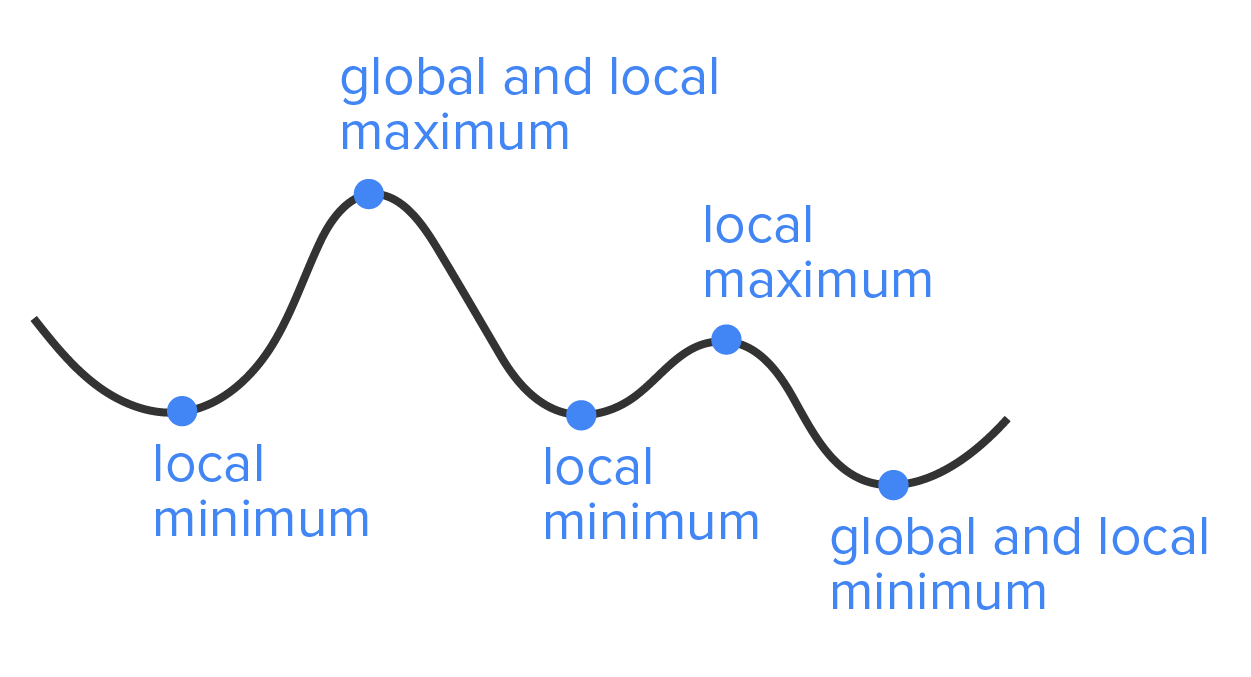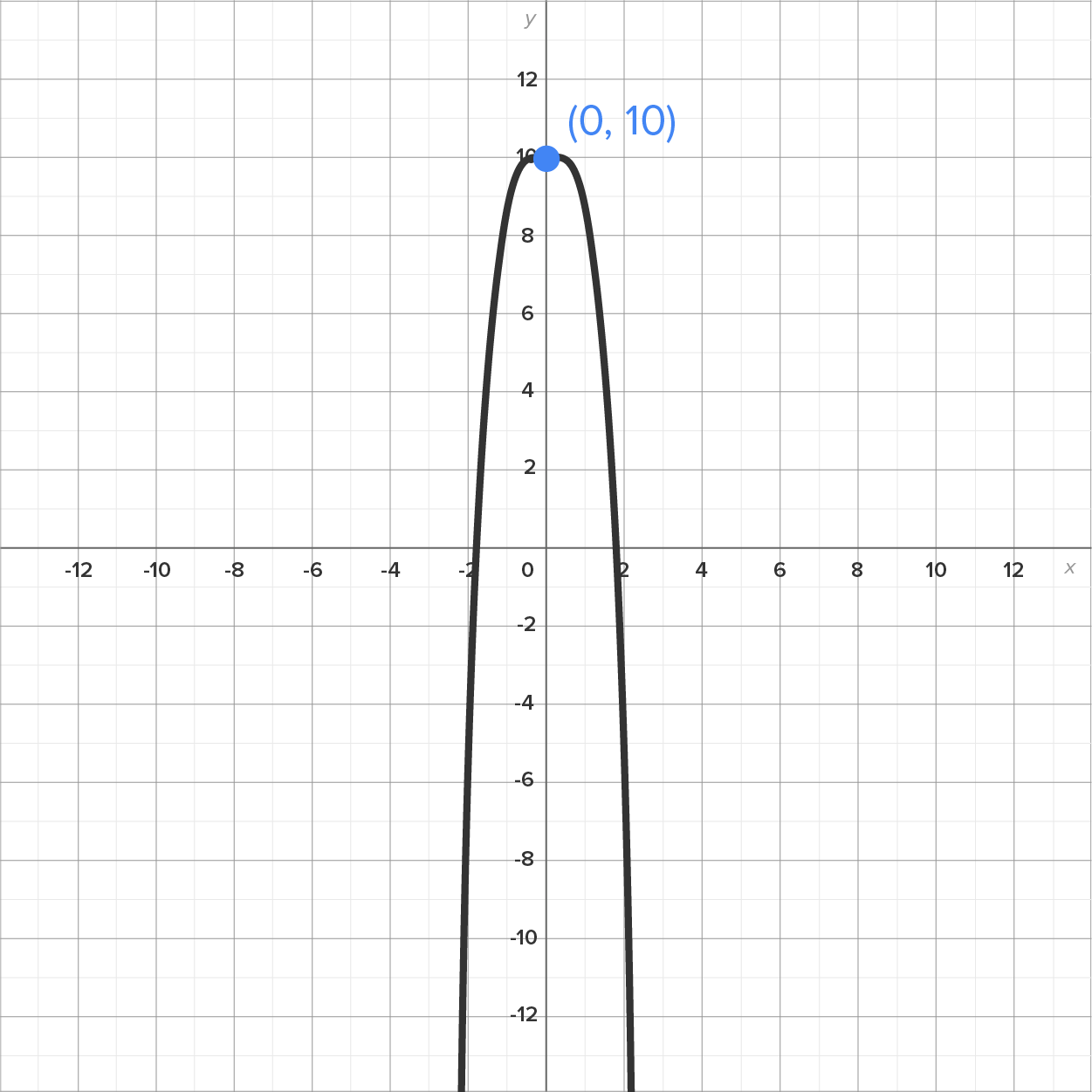Table of Contents |
One of the main uses of derivatives is to find minimum and maximum values of a function, or more simply put, extreme values (or extrema) of a function.
A function can have any one of the following:
 has a global (or absolute) maximum at
has a global (or absolute) maximum at  if
if  for all x. In other words,
for all x. In other words,  is the largest value of a function
is the largest value of a function  , and occurs when
, and occurs when  .
.  has a global (or absolute) minimum at
has a global (or absolute) minimum at  if
if  for all x. In other words,
for all x. In other words,  is the smallest value of a function
is the smallest value of a function  , and occurs when
, and occurs when  .
. has a local (or relative) maximum at
has a local (or relative) maximum at  if
if  for all x close to
for all x close to  . In other words,
. In other words,  is the largest value of a function
is the largest value of a function  for values near
for values near  .
.  has a local (or relative) minimum at
has a local (or relative) minimum at  if
if  for all x close to
for all x close to  . In other words,
. In other words,  is the smallest value of a function
is the smallest value of a function  for values near
for values near  .
.
 has a global (or absolute) maximum at
has a global (or absolute) maximum at  if
if  for all x. In other words,
for all x. In other words,  is the largest value of a function
is the largest value of a function  , and occurs when
, and occurs when  .
.  has a global (or absolute) minimum at
has a global (or absolute) minimum at  if
if  for all x. In other words,
for all x. In other words,  is the smallest value of a function
is the smallest value of a function  , and occurs when
, and occurs when  .
. has a local (or relative) maximum at
has a local (or relative) maximum at  if
if  for all x close to
for all x close to  . In other words,
. In other words,  is the largest value of a function
is the largest value of a function  for values near
for values near  .
.  has a local (or relative) minimum at
has a local (or relative) minimum at  if
if  for all x close to
for all x close to  . In other words,
. In other words,  is the smallest value of a function
is the smallest value of a function  for values near
for values near  .
.EXAMPLE
Consider the function as shown in the graph below.
as shown in the graph below.

 has a global maximum and local maximum at
has a global maximum and local maximum at  , and its value is 10.
, and its value is 10.
EXAMPLE
Now consider the function , but contained on the interval
, but contained on the interval 

 , both a local and global maximum occurs and is equal to 10.
, both a local and global maximum occurs and is equal to 10.
 has a global minimum at
has a global minimum at  , which is equal to -6.
, which is equal to -6.
 means that
means that  is the most extreme value on an open interval containing
is the most extreme value on an open interval containing  (both sides of
(both sides of  ).
).

Source: THIS TUTORIAL HAS BEEN ADAPTED FROM CHAPTER 3 OF "CONTEMPORARY CALCULUS" BY DALE HOFFMAN. ACCESS FOR FREE AT WWW.CONTEMPORARYCALCULUS.COM. LICENSE: CREATIVE COMMONS ATTRIBUTION 3.0 UNITED STATES.